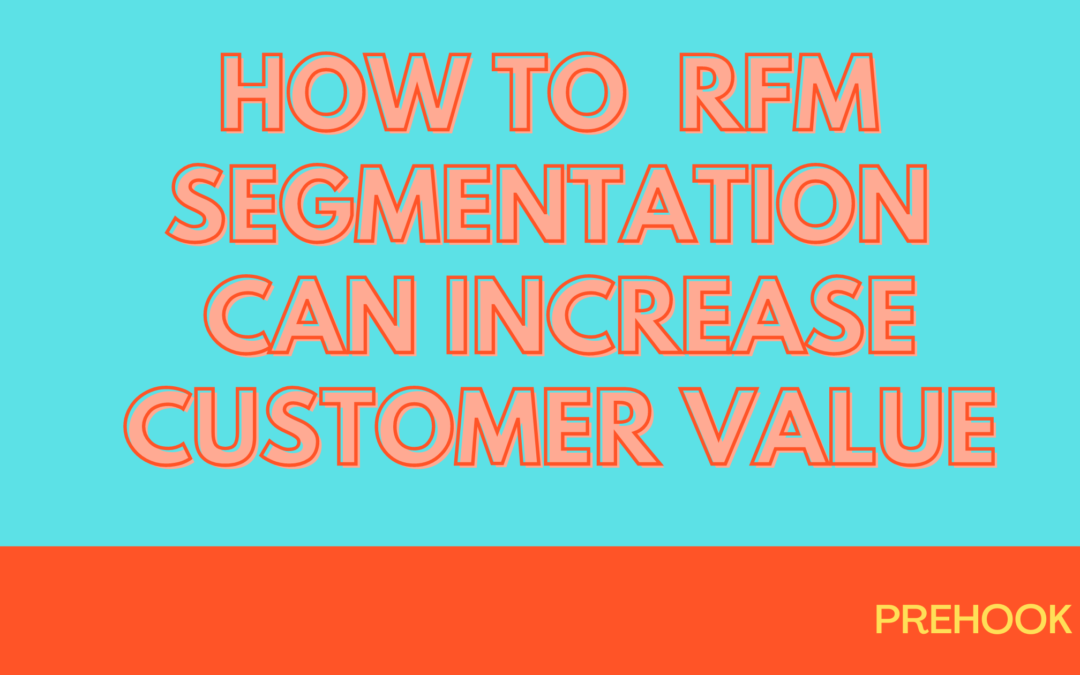The RFM Segmentation is a powerful way to group your customer base based on three key factors:
- Recency: how recently they purchased from you
- Frequency: how many times they have purchased
- Monetary Value: how much revenue those orders brought.
This is a great method to identify how a customer is likely to behave, based on their previous behavior. Learn how to use this method to improve your customer marketing, improve personalized marketing campaigns, and get the right offer in front of the right cohort of customers.
Frameworks bring clarity and focus. And with the overwhelming deluge of customer data collected, a framework to segment your customer base is critical.
The goal is to understand and predict how your customers will behave based on their purchase history.
By clustering customers based on similar behaviors, you can hone in messaging and improve relevance–this improves response rates, repeat purchases, and ultimately lifetime value.
As an ecommerce marketer, you likely are sitting on extensive customer data, that are not being used: purchase history, browsing history, engagement with marketing campaigns, and more.
How RFM Can Help You
There are a few reasons why an RFM Segmentation is loved by eCommerce marketers:
Enables Personalization: By creating super-tight customer segments, the messaging and offers sent to each segment can be more relevant and personalized.
Objective Analysis: RFM by definition uses numbers, so that your customer base is clearly defined quantitatively.
Delivers Value to Customers: The coded numbers make RFM Segmentation a methodology that your team can use universally. You can deliver targeted offers and messages to customers based on the specific RFM cohort, and do so at scale.
Creates Efficiencies: When you quantify your customer base, you can easily see who the valuable customers are. This will help you focus your efforts and resources on the customers that actually contribute to revenue and growth, as opposed to catering to those low-value customers that will eventually churn.
Step 1: Create Your Scoring System
There are a variety of naming conventions for each group, as well as scoring systems.
Once a scoring system is determined, you can proceed to placing each of your customers in a segmentation bucket.
Step 2: Create Your Segments
The naming and scoring is up to your discretion. A few sample segments that you can create with RFM:
VIP Customers – ie the best customers. These have purchased recently, at a high frequency and comprise the highest tier of lifetime value.
Potential VIP Customers – these have average spending, but a high frequency that shows potential for VIP status in the future.
Low-Spending Active Spenders – Repeat customers, but low spenders.
Churned VIPs – high value customers who have not purchased in a while, and thus considered churned.
At Risk Customers – These are customers that purchase regularly, with a high Average Order Value, but declining frequency. Thus, they are at risk of churn, and a reactivation or win-back email is in order to re-engage them.
Step 3: Create Your Messaging And Campaigns
The segments that you create inherently address the behaviors of the customer. This can offer valuable insights into the marketing strategy and improving the ROI of marketing campaigns.
Next Steps
The process of segmenting an existing customer base based on Recency, Frequency, and Monetary Value is invaluable, but can also be an ongoing challenge.
The process can be completed with a manual export and analysis of customer transactions. You can read a step-by-step guide here.
You can also automate RFM Segmentation with tools like Omniconvert’s REVEAL to uncover insights about your customer base that is lying hidden in your data.
To learn more about RFM Segmentation, Omniconvert’s Chief Customer Evangelist, Juliana Jackson has written a detailed guide to RFM Segmentation.
The end goal of all this is to improve the customer experience by creating narrow segments and communicating messaging and offers in a relevant way. RFM is therefore a powerful lever to drive repeat orders, increased loyalty, and higher customer lifetime value.

